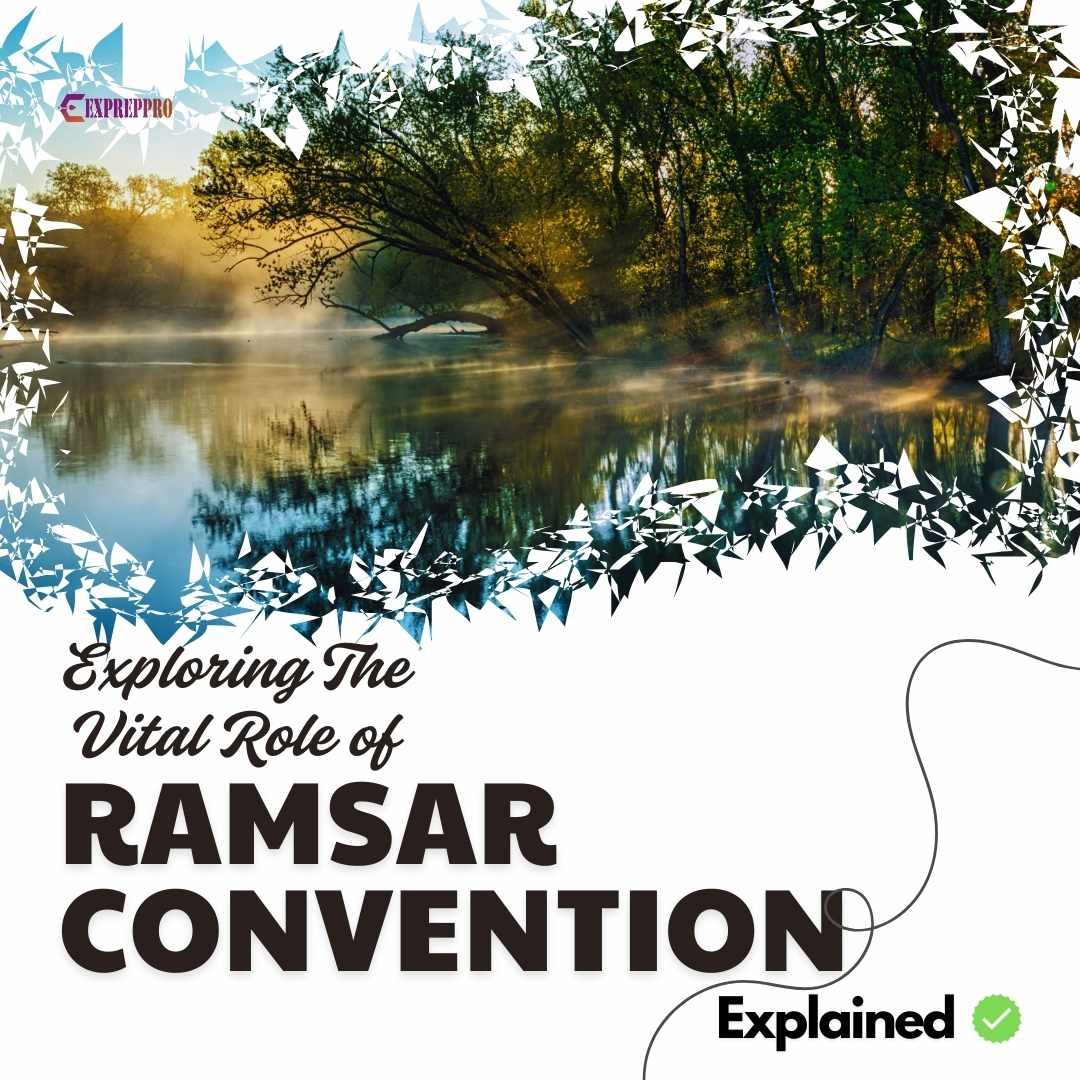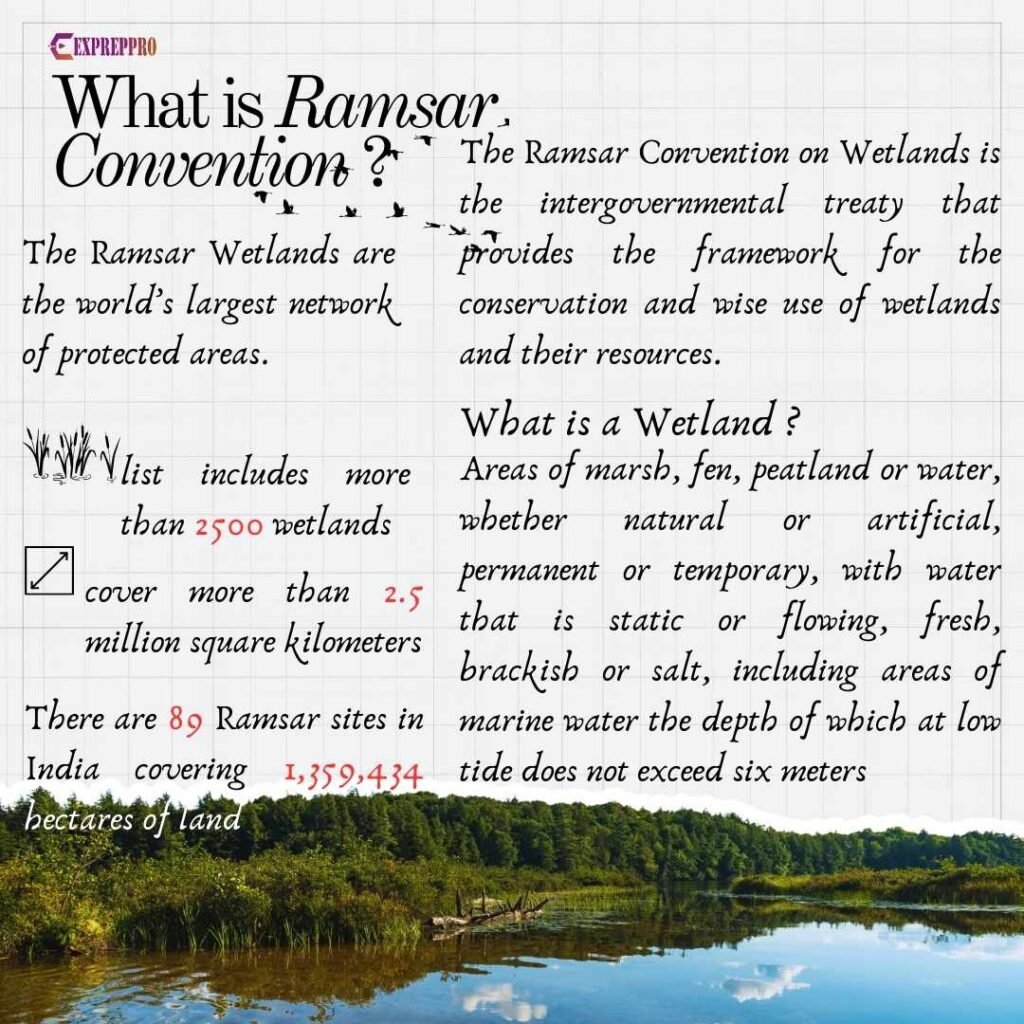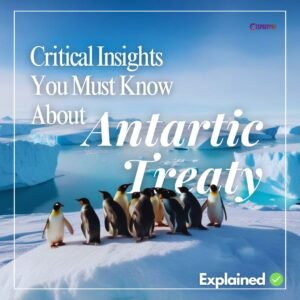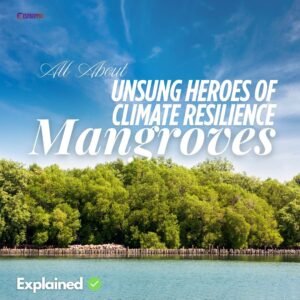
Ramsar Convention on Wetlands is an intergovernmental treaty that provides the framework for the conservation and wise use of wetlands and their resources. According to Ramsar convention, “wetlands are areas of marsh, fen, peatland or water, whether natural or artificial, permanent or temporary, with water that is static or flowing, fresh, brackish or salt, including areas of marine water the depth of which at low tide does not exceed six meters”.
The wetlands are very productive, and the most productive ecosystems in the world are marshes and swamps. It plays a crucial role in water purification, storage, and flood control, and a period without wetlands will result in a period without fresh water. The mission of this convention is the sustainable development of all wetlands through local, regional, and national actions and international cooperation.
Project MAR
IUCN decided to launch the MAR Project when IUCN realised the threat of wetland degradation.
The main aim of the MAR project or “MARshes”, “MARécages”, and “MARismas” was the conservation of wetlands. IUCN conceived this project during the MAR conference in French Camargue from 12 to 16 November 1962.
After the MAR conference, a series of conferences were held in different places, such as St.Andrews in the United Kingdom, Noordwijk in the Netherlands, Leningrad in the USSR, Morges in Switzerland, Vienna in Austria, Moscow in the USSR, Espoo in Finland and Knokke in Belgium.
The discussion under the aegis of the International Waterfowl and Wetlands Research Bureau and the Government of the Netherlands from 1963 to 1970 helped to finalise the wetland conservation ideas. Prof. Geoffrey Matthews, Honorary Director of the International Wildfowl Research Bureau or Wetlands International and Mr Eskander Firouz, an environmental conservationist and Director of Iran’s Game and Fish Department, played a vital role in this conservation efforts.
The convention to finalise the draft was initially scheduled in” Babolsar“, Iran. Later, the venue was shifted to a resort town called “Ramsar” in Iran because of better connectivity.
Ramsar Convention On Wetlands
The Iranian Game and Fish Department organised the Ramsar Convention on 2 February 1971 and finalised the official document ” The Convention on Wetlands of International Importance, especially as Waterfowl Habitat”.
Eighteen countries attended the Ramsar convention, and five more attended as observers. Intergovernmental agencies like UNESCO and NGOs like W.W.F. also participated in this conference.

Ramsar Negotiations and Roadblock
The roadblocks in negotiations arose when the draft was circulated among parties. For example, “recognising the need to limit any intrusion on national sovereignty” raised concerns among the countries.
Finally, to initiate a solution, Iran indicated its willingness to place one of its important wetlands with global significance in joint trust with a suitable international agency.
On 3 February 1971, the convention document was signed by representatives of eighteen countries, including Germany, India, Iran, Jordan, Ireland, Netherlands, Pakistan, South Africa, The USSR, the United Kingdom, Turkey, Switzerland, Sweden, Spain, and Belgium.
But the five observers, Bulgaria, Greece, Hungary, Italy, and Romania, didn’t sign the Ramsar convention.
Which is the first Ramsar site in the world?
Australia became the first country, on 8 April 1974, to accede to the Ramsar convention by declaring two lakh twenty thousand and seven hundred hectares of “Cobourg Peninsula” a Ramsar site.
On 21 December 1975, upon ratification by Greece, the convention came into force because, as per the terms of the convention, the declaration would formally come into force only after being ratified by at least seven countries.
The largest Sites are Rio Negro in Brazil (120,000 square kilometres), and Ngiri-Tumba-Maindombe in the DR of Congo and Queen Maud Gulf in Canada; these Sites each cover over 60,000 square km. The United Kingdom holds the distinction of holding the highest number of Ramsar sites, i.e. 176 Ramsar sites. Brazil has the largest area, with 267,000 square km as Ramsar wetlands.
Out of seven, only four, Finland, Iran, South Africa, and Sweden, were the original signatories, and Norway, Australia, and Greece were not the original signatories to the Ramsar convention.
The convention has 172 contracting parties and two thousand four hundred fifty-five wetlands covering 2.5 million square kilometres of land.
Amendments to the Original Ramsar Convention Document
Since its inception in February 1971, the official Ramsar document has been modified twice.
- At the Paris Protocols.
- At the Regina Amendments.
Paris Protocol
Paris Protocol was adopted in December 1982 by an extraordinary conference of parties held at UNESCO headquarters in Paris and came into force in 1986.
The Paris Extraordinary Conference of Parties recognised and adopted a procedure to amend the convention document. The Paris Protocol added Article 10 B.I.S to the document. Article 10 B.I.S laid the procedure to amend the convention. The conference also finalised the official language of the Ramsar convention.
Official Language Of Ramsar Convention
The Ramsar convention currently uses English, French, and Spanish as its official languages.
English and French were the Convention’s original working languages. Spanish was added to the list through Resolution 4.2 at Montreux COP or COP4.
Regina Amendments
Regina amendments are a series of amendments to articles 6 and 7 of the convention text. It was finalised and accepted at an extraordinary COP held in Regina, Canada, on 28 May 1987 and came into force in May 1994.
Technically, the Regina amendments did not alter the fundamental structure of the convention, even though they brought many changes to its original documents.
It defined the powers of COP, established an intercessional standing committee and a permanent secretariat and created a budget for the Ramsar convention.
What is the definition of a wetland under the Ramsar convention?
Article 1.1 of the Ramsar convention clearly defines Wetland as “the areas of Marsh, Fen, Peatland, or water, whether natural or artificial, permanent or temporary, with water that is static or flowing, fresh, brackish or salt, including areas of marine water the depth of which at low tide does not exceed six meters”.
At the same time, Article 2.1 mentions that the riparian and coastal zones adjacent to the wetlands and islands or bodies of marine water deeper than six meters at low tide will be considered wetlands.
The Ramsar Convention contains three attributes: marine or coastal wetlands, inland wetlands, and human-made wetlands, to describe 42 different types of habitat.
| A | Permanent shallow marine waters; in most cases, less than 6 m deep at low tide; includes sea bays and straits |
| B | Marine sub tidal aquatic beds; includes kelp beds, sea‐grass beds, and tropical marine meadows |
| C | Coral reefs |
| D | Rocky marine shores; includes rocky offshore islands and sea cliffs |
| E | Sand, shingle, or pebble shores; includes sand bars, spits, and sandy islets; includes dune systems and humid dune slacks |
| F | Estuarine waters; permanent water of estuaries and estuarine systems of deltas |
| G | Intertidal mud, sand, or salt flats |
| H | Intertidal marshes; includes salt marshes, salt meadows, saltings, raised salt marshes; includes tidal brackish and freshwater marshes |
| I | Intertidal forested wetlands; includes mangrove swamps, Nipah swamps and tidal freshwater swamp forests |
| J | Coastal brackish/saline lagoons; brackish to saline lagoons with at least one relatively narrow connection to the sea |
| K | Coastal freshwater lagoons; includes freshwater delta lagoons |
| Zk (a) | Karst and other subterranean hydrological systems, marine/coastal |
| L | Permanent inland deltas |
| M | Permanent rivers, streams, creeks and waterfalls |
| N | Seasonal or intermittent or irregular rivers or streams or creeks |
| O | Permanent freshwater lakes (over 8 ha) and large oxbow lakes |
| P | Seasonal/intermittent freshwater lakes (over 8 ha); includes floodplain lakes |
| Q | Permanent saline/brackish/alkaline lakes |
| R | Seasonal/intermittent saline/brackish/alkaline lakes and flats |
| Sp | Permanent saline/brackish/alkaline marshes/pools |
| Ss | Seasonal/intermittent saline/brackish/alkaline marshes/pools |
| Tp | Permanent freshwater marshes/pools; ponds (below 8 ha), marshes, and swamps on inorganic soils; with emergent vegetation water‐logged for at least most of the growing season |
| Ts | Seasonal/intermittent freshwater marshes/pools on inorganic soils; includes sloughs, potholes, seasonally flooded meadows, and sedge marshes |
| U | Non‐forested peatlands; includes shrub or open bogs, swamps, and fens |
| Va | Alpine wetlands; includes alpine meadows and temporary waters from snowmelt |
| Vt | Tundra wetlands; includes tundra pools and temporary waters from snowmelt |
| W | Shrub‐dominated wetlands; shrub swamps, shrub‐dominated freshwater marshes, shrub‐carr, and alder thicket on inorganic soils |
| Xf | Freshwater, tree‐dominated wetlands; includes freshwater swamp forests, seasonally flooded forests, and wooded swamps on inorganic soils |
| Xp | Forested peatlands; peat‐swamp forests |
| Y | Freshwater springs |
| Zg | Geothermal wetlands |
| Zk (b) | Karst and other subterranean hydrological systems, inland |
| 1 | Aquaculture ponds |
| 2 | Ponds; includes farm ponds, stock ponds, and small tanks (generally below 8 ha) |
| 3 | Irrigated land; includes irrigation channels and rice fields |
| 4 | Seasonally flooded agricultural land |
| 5 | Salt exploitation sites or salt pans, salines, etc |
| 6 | Water storage areas like dams |
| 7 | Excavations; gravel/brick/clay pits; borrow pits, mining pools |
| 8 | Wastewater treatment areas; sewage farms, settling ponds, oxidation basins, etc |
| 9 | Canals and drainage channels, ditches |
| Zk (c) | Karst and other subterranean hydrological systems, human‐made |
Structure of Ramsar Convention on Wetlands
Ramsar convention has four main organs. They are
- COP or Conference of Parties
- Standing Committee
- Ramsar secretariat
- The scientific and technical review panel or S.T.R.P.
Conference Of Parties Of The Ramsar Convention
COP is the policy-making or decision-making body of the Ramsar Convention. It meets once every three years and will be hosted in a city. For example, COP 13 was held in 2018 in Dubai in the United Arab Emirates. However, COP 14 was conducted in the hybrid model at two different locations: Wuhan in China and Geneva in Switzerland.
During the COP, the parties receive their national reports for the past three years and approve the new plan and budget for the next three years.
Non-member states and intergovernmental organisations attend COP as non-voting observers.
So far, 14 COP meetings happened, along with three extraordinary meetings. The third extraordinary COP was an online meeting in 2021. Normally, COP will be hosted in a city; for example, COP 13 was held in 2018 in Dubai in the United Arab Emirates. However, COP 14 was conducted using the hybrid model at two different locations: Wuhan in China and Geneva in Switzerland.
At first, the decisions of the COP were considered recommendations. From the Dubai Conference of Parties or thirteenth COP, parties began adopting resolutions that focused on finance, budget, and convention implementation issues. The use of recommendations was abandoned by the Valencia Conference of Parties or 8 COP.
The Procedure of Resolution
Each resolution will be introduced as a draft in a plenary session. After extensive and detailed negotiations, the revised one will be brought to the COP session for adoption. According to the rules of procedure of the Ramsar convention, parties of COP will make decisions through voting, but in reality, COP follows the traditions of consensus decision-making.
If a resolution faces significant opposition, the party which sponsors it may decide to withdraw. The case of Switzerland’s resolution on the Wetlands of Antarctica is an example.
Swiss Resolution of Antarctica Wetlands
During Nineth C.O.P. at Kampala, Uganda, Switzerland tried to introduce a draft resolution on Antarctica. Even though it is common to say wetlands are present in every continent except Antarctica. Even the books and articles proclaim it. But in reality, Antarctica does have wetlands.
Suddenly, this Swiss resolution became a controversy. The reason was the Antarctic treaty system.
The new resolution could destroy the Antarctic treaty under which territorial claims of big powers were stopped until at least 2048.
But later, instead of asking for a vote, Switzerland decided to withdraw the solution. Due to this withdrawal, the tradition of consensus decision-making was saved.
The Case of Iran, Syria and Israel
In another case, Iran and Syria proposed to move Israel from the Asia region. The issue went for a preliminary vote on the proposal. 46 voted for not to have a formal vote, while 35 parties abstained from preliminary voting. Subsequently, Iran withdrew its proposal, and the COP reached a consensus. Even though Israel belongs to Asia, it will be considered a member of the European region.
Interestingly, Iran proposed this resolution at the San José COP, and a consensus was reached at the Dubai COP.
Regional Organisation Ramsar Convention
The Ramsar Convention divided the world into six groups. Resolution 3.3 added the system of regional division into six regions, which the 1987 COP passed.
The six groups are
- Africa
- Europe (During the initial days, East and West Europe were treated as different regions. Later, both merged into one region.)
- Asia
- Latin America
- The Caribbean or Neotropics
- Oceania
- North America
Above all, before the COP meeting, pre-COP meetings held at regional levels help to identify priorities.
Why did the Neotropics change to the Caribbean?
Neotropics was replaced with the Caribbean by resolution 12.4 passed by the 15 COP to reflect the established usage under other multilateral agreements.
Standing Committee Of Ramsar Convention
The COP generally meets once every three years, and the standing committee works during the inter-sessional period.
The Standing Committee of Ramsar Conservation is an elected executive body representing the COP between the COP triennial meeting. They help to conduct the administration.
COP representatives will elect a new standing committee at each ordinary conference of parties and will be at the helm for the next three years.
In 1987, the Conference of Parties decided to establish a standing committee. It was constituted by resolution 3.3 of Regina C.O.P.
The tasks of the Standing Committee were defined by resolution 5.1 of Kushiro COP, which was redefined in San José COP.
Normally, they meet once a year at the convention secretariat in Switzerland. They will also meet before each COP meeting.
Composition of Standing Committee
It is composed of 16 regional members and two ex-office members. The ex-office members usually represent the host country. The standing committee is divided into various working groups, such as the management working group, finance subgroup, and planning subgroup.
Observers of Ramsar Convention
Observers are usually non-member states, intergovernmental institutions or NGOs.
At present, there are seven permanent observers. This list includes Switzerland, the country that hosts the Ramsar secretariat and the Netherlands, the country that hosts the headquarters of Wetlands International.
The other members are
- Birdlife International
- IUCN
- International Water Management Institute
- Wetlands International
- W.W.F. International
Observers can participate actively in the meeting, but they don’t have permission to vote. In reality, the Ramsar uses the tradition of consensus-making through dialogue.
Secretariat of Ramsar Convention
The Secretariat of Ramsar is responsible for supervising its day-to-day activities. It is located at the headquarters of IUCN in Gland, Switzerland and started as a continuing bureau.
According to article eight of the Ramsar convention, they need a continuing bureau for day-to-day affairs. This duty was initially assigned to IUCN.
In 1987, the third COP initiated a bifurcated approach. IUCN would continue to support the bureau. One section was at IUCN headquarters, while the other section was with science experts at the headquarters of I.W.R.B, located in the United Kingdom.
COP 4 boldly decided to unify both and establish a permanent headquarters at the IUCN headquarters in Switzerland. COP 4 also changed the name to Secretariat.
The decision to change the name was due to a legal view from the law centre of IUCN. This change will help with the terminology of other environmental conventions. The new headquarters will work as an independent unit with funds from the convention’s budget.
Its employees are legally considered as the staff of the IUCN. The secretary-general heads the Secretariat. At present “Doctor Musonda Mumba” holds the position of Secretary General of the Convention on Wetlands.
Roles of the Ramsar Secretariat
- The Secretariat maintain the list of wetlands of international importance.
- To assist in recruiting new contracting parties.
- To assist in convening and organising C.O.P. meetings and S.T.R.P.
- To publish the decisions and resolutions of the C.O.P. and the standing committee.
- To organise Ramsar advisory missions at the request of contracting parties.
- To provide administrative support to S.T.R.P. and the Standing committee.
- To develop cooperation with other conventions and agencies.
- To fund programmes that support the implementation of the Ramsar convention.
- To inform the public and contracting parties of the recent convention-related developments.
Scientific And Technical Review Panel Or S.T.R.P.
Resolution 5.5, passed by COP 1993, established the S.T.R.P. or Scientific and Technical Review Panel. They serve as experts and not as representatives of their country. Its main aim is to provide scientific and technical guidance to various organs of the Ramsar Convention.
The management working group selects S.T.R.P. based on nominations received from the parties for three years. Initially, members of S.T.R.P. were appointed by a standing committee.
S.T.R.P. consists of eighteen full members with six regional representatives. Apart from these, S.T.R.P. is comprised of technical and scientific members from the priority areas. S.T.R.P. also has a group of additional expert consultants and will be invited to the meeting when required.
S.T.R.P. National Focal Point
Resolution 8.2 called on to appoint an S.T.R.P. national focal point. This national focal point can contribute to the S.T.R.P. work and is expected to be adopted for national purposes. But in reality, it didn’t go well due to many problems like fund shortages. They also produce a range of reports like Ramsar technical reports, briefing notes and policy briefs.
Who Can Become The Members Of Ramsar Convention?
According to article nine point two, any member of the United Nations or of one of the specialised agencies or I.A.E.A. or party to the statute of the International Court of Justice can become a member of this convention.
The U.N. non-member states or agencies can join the convention if they satisfy the criteria under Article 9.2.
The instrument of ratification has to be submitted to the depository has to be submitted to the depository of the convention. UNESCO Serves as the depository of the Ramsar Convention.
To join Ramsar, a non-member must fulfil three conditions.
- A duly signed instrument of ratification by the head of the state or foreign affairs minister and submitted to the depository through a proper diplomatic channel to receive a formal notification.
- Should identify at least one of its wetlands of international importance.
- The applicant should be willing to contribute its share to the budget of the convention.
For example, when India officially joined on August 8, 1982, India designated two wetlands, Chilka and Keoladeo, in Rajasthan as Ramsar sites.
Budget of the Ramsar Convention
The budget of the Ramsar convention is prepared for three years. C.O.P. reviews the budget at each ordinary C.O.P. meeting. “Swiss Franc” is its official working currency.
The Secretariat prepares and submits the budget to the standing committee for approval. The standing committee reviews the budget and submits it to C.O.P.
C.O.P. will approve the final three-year budget.
According to article six point five, if a formal vote is required, then it means a two-thirds majority for budget approval.
The Budget has a core budget and non-core budget components. The core budget covers the expenses for the functions of the Secretariat, the Cost of functions of the standing committee and S.T.R.P., the Cost of regional activities and initiatives, the Cost of the C.E.P.A. support activities, and Travel costs for delegates from less developed countries.
The cost of C.O.P. meetings is not covered inside the core budget components. Countries’ contribution is based on their contribution to the U.N. Budget, and the minimum contribution is 1000 Swiss Francs.
The non-core budget funds the unfunded priorities like Ramsar advisory missions, Ramsar sites information service, and Arabic translation services. It is raised exclusively by voluntary contributions. The U.S.A. alone contributes twenty-two per cent of total voluntary contributions.
Legal Status of the Ramsar Convention
The legal effect of resolutions and decisions depends on individual countries. Some countries view the resolutions as aspirational and not legally binding, while others, like the Netherlands, adopt them to their domestic legal framework.



